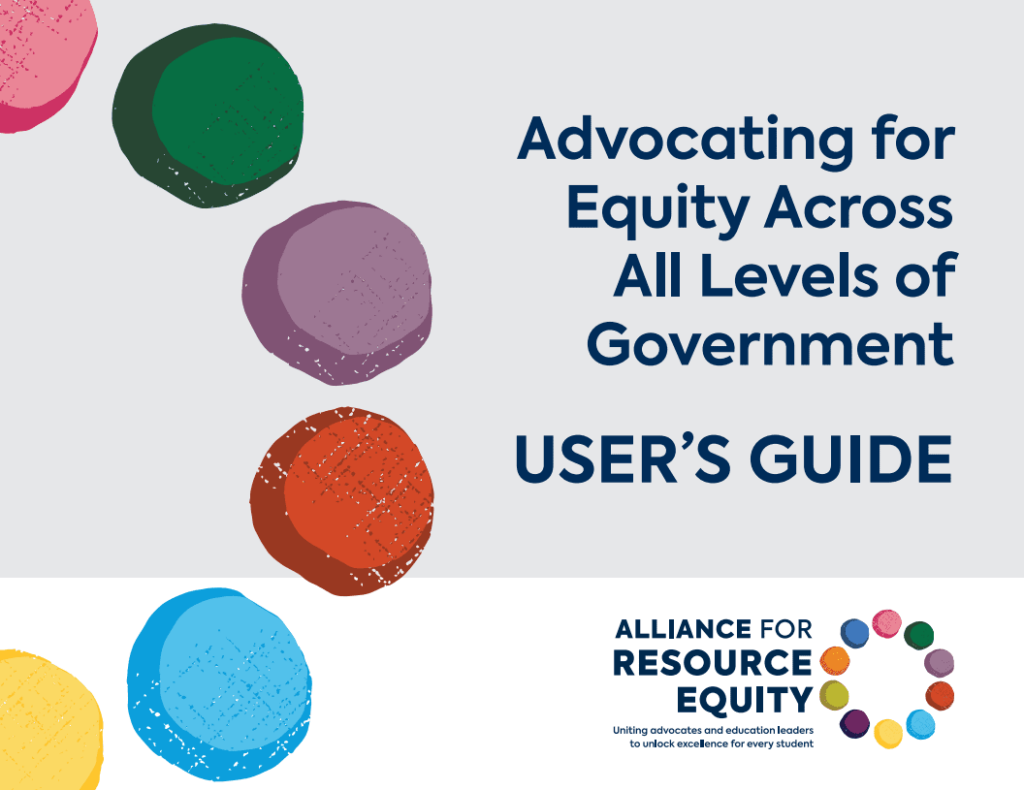This summer, education advocates across the country are busy developing, refining, and sustaining their priorities for the next school year. Foundational to steering these efforts in an impactful direction is understanding not only what the ask is, but also, who to make the ask to.
And yet, it’s not always clear who exactly that is. While many funding and policy decisions happen within districts, additional players, at multiple levels, are key decisionmakers. The Education Trust recently released “Advocating for Equity Across All Levels of Government” guides, which are designed to help advocates identify the key players responsible for the policy and implementation decisions core to advancing their communities’ priorities and target their advocacy toward the right level of governance.
For example, take a scenario where district advocates have a specific ask: adjust the targeted, intensive tutoring opportunities to be offered within the school day to help make up ground on unfinished learning. They are asking for tutoring during the day to avoid barriers to access when tutoring is only offered online or afterschool. But this change requires an adjustment to the instructional day. Who should advocates be asking to adjust the school schedule?
First, advocates can determine which guide to consult, organized by Resource Dimension of Equity. (In this case, it is Dimension 5: Instructional Time & Attention). From here, advocates consult the corresponding guide and look for references to their question. The resource indicates that state and district leaders both can provide guidance, but school leaders generally establish school schedules — including tutoring.
These insights can direct next steps. Since school leaders generally have the power to make scheduling decisions, advocates could connect with their school’s principal and encourage other parents and advocates in their school to do the same, particularly families of children who can’t attend tutoring session when they are currently scheduled. If school leaders indicate that the district actually controls scheduling, advocates can refocus advocacy efforts toward district staff, including the superintendent. Bringing these considerations to the attention of their school board could be another promising avenue to influence both school and district leaders. Given that states and districts may also publish best practices, key considerations, and additional resources on their website, advocates could use these materials to guide their engagement with their school principal as well.
Let’s consider another situation. Here, advocates have used Alliance for Resource Equity toolkit to conduct a needs assessment via the Resource Equity Diagnostic to identify particular areas for improvement. Based on those results, they have decided to focus attention on Dimension 2: Teaching Quality and Diversity. These advocates know that access to a racially and culturally diverse teacher workforce is beneficial to all students, but particularly important for students of color, who often thrive in classrooms led by teachers with similar racial and cultural backgrounds. The corresponding guidebook helps probe root causes, revealing that the district has difficulty retaining teachers of color. Now what? Who do these advocates need to engage to ensure their district is providing the structures and supports needed to retain teachers of color?
Advocates can use this tool to look up the answer. While state and federal leaders help facilitate building a strong pipeline of teachers of color, implementing practices to retain teachers of color are largely in control of district and school leaders. However, state leaders can support districts and schools with probing data as well.
Action steps become much clearer now. Given that school leaders play such a prominent role in creating welcoming and supportive school environments for educators, it makes sense to focus advocacy efforts on principals. But districts can also partner with educator prep programs, residency programs, or other high-quality alternative route programs that have a successful track record of recruiting, preparing, and retaining teacher candidates of color, and audit district hiring and personnel policies to ensure they use equitable and anti-bias practices. Advocates should also scan the rest of the guide for any additional insight — districts can also offer compensated teacher leadership roles of opportunities, which could boost retention rates of highly effective teachers.
So, as teachers plan for the upcoming school year, so can advocates. Use this summer to understand who has the authority over each issue to develop and sustain an effective advocacy agenda.
The “Advocating for Equity Across All Levels of Government” toolkit builds upon the Alliance for Resource Equity’s existing framework and resources, which helps practitioners and advocates change the conversation from “how much” money is spent at a school to also include “how well” a school uses its resources. The toolkit consists of the Education Combination, to help district leaders and advocates understand key dimensions of resource equity, the Resource Equity Diagnostic, to walk through how to conduct a needs assessment inventory, and the Resource Equity Guidebooks that break down potential root causes and prompt next steps. The Alliance for Resource Equity is a partnership between The Education Trust and Education Resource Strategies.




